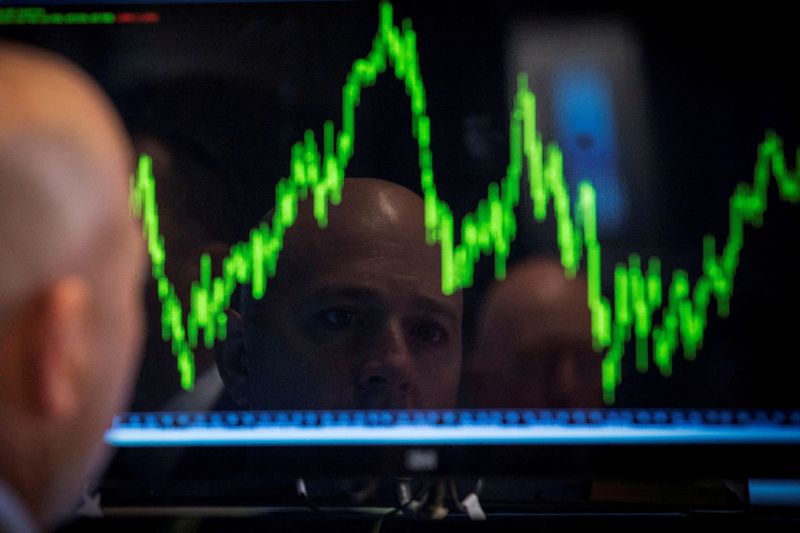By Lewis Krauskopf, Saqib Iqbal Ahmed
NEW YORK (Reuters) -A fresh look at the pace of inflation will test the U.S. stock market in the coming week, as investors worry that President Donald Trump’s tariff plans are endangering Wall Street’s hopes for interest rate cuts this year.
The benchmark S&P 500 remained about 1% below record-high levels, even as stocks were whipsawed this week by headlines over Trump’s plans to impose tariffs on the largest U.S. trading partners.
Tariffs are widely seen as inflationary, complicating the picture for the Federal Reserve. The central bank paused its rate-cutting cycle last month as it waits for data to give an all-clear sign to keep easing monetary policy.
The monthly consumer price index due on Wednesday offers the latest read on inflation trends, a key investor concern. A survey of over 4,000 traders published this week showed inflation and tariffs are the factors expected to have the biggest sway on markets this year.
“Inflation really is the wildcard for 2025 in terms of how it’s going to impact the interest rate environment,” said Charlie Ripley, senior investment strategist for Allianz Investment Management. “In the event that we have higher inflation, it really reduces the opportunity for the Fed to continue cutting rates, and obviously markets don’t like that.”
The January report is expected to show an 0.3% increase in CPI on a monthly basis, according to a Reuters poll.
Several Wall Street analysts warned that January is traditionally a more challenging period to forecast CPI due to seasonal factors, increasing the potential for market volatility when the data is released.
The pace of inflation has moderated from 40-year highs reached in 2022, allowing the Fed to cut rates last year, but it has not yet subsided to the central bank’s 2% annual target.
“We certainly don’t want to see (CPI) heating up again,” said Art Hogan, chief market strategist at B. Riley Wealth. “That would raise a concern that the Fed funds rate is going to be where it is for longer than we anticipate now.”
Markets are pricing in an over 80% chance that the Fed continues to hold rates steady at its next meeting in March, while roughly two cuts are expected by the end of the year, according to LSEG data.
Expectations for the Fed to stay on hold in March solidified after Friday’s mixed U.S. employment report. Job growth slowed more than expected in January, but an unemployment rate of 4% supported evidence of a healthy labor market.


